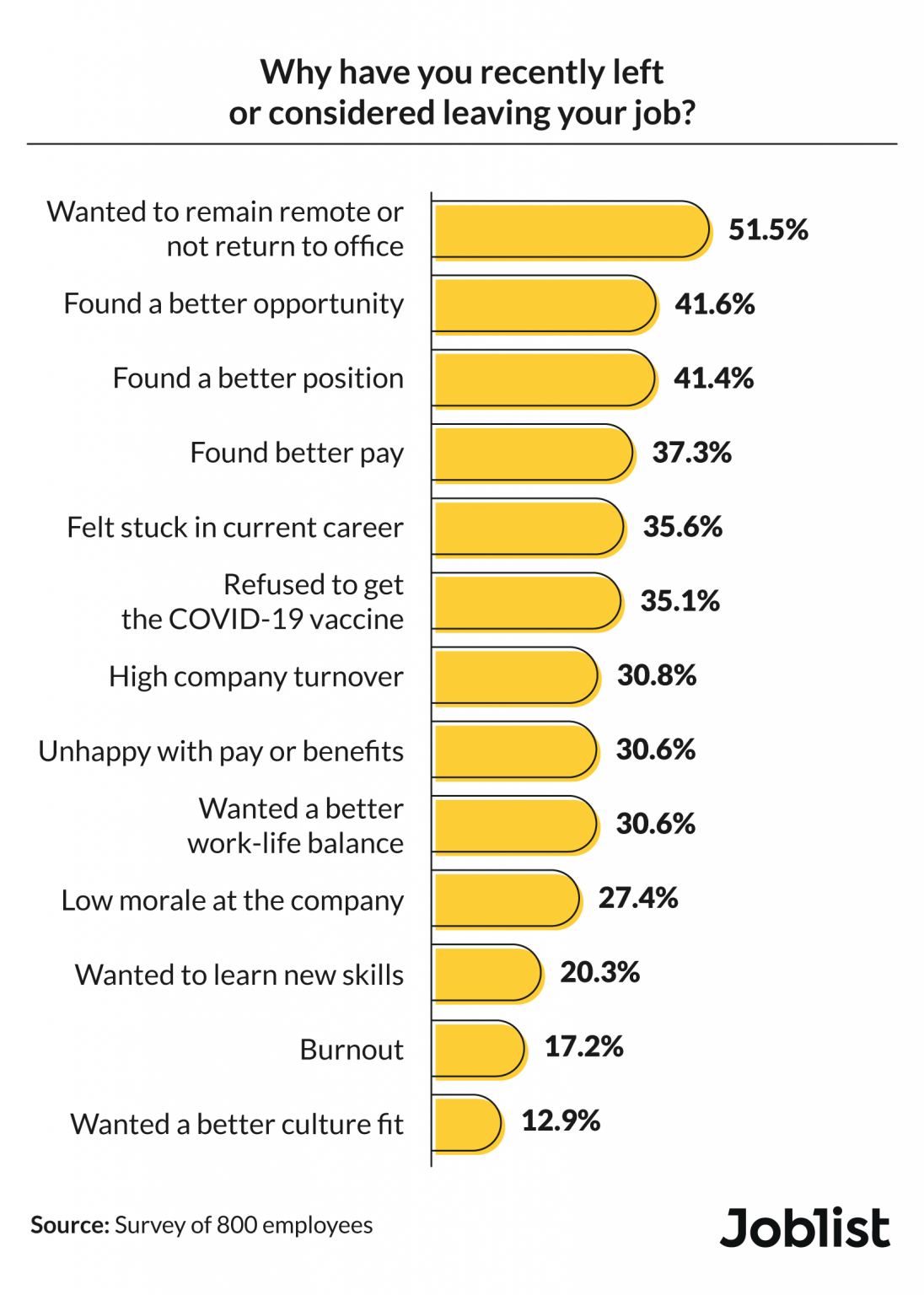How companies are preventing turnover right now—and fighting to bolster retention
A new study sheds light on how others are battling against a tidal wave of resignations, which offers key insights into how comms pros should respond.

The role of the communicator is constantly evolving.
But as “The Great Resignation” rages on at a staggering pace, many are being pressed into battles that have historically been waged by HR personnel and higher-level execs. As a new study from Joblist reveals, companies are in an all-out war to keep the talent they have—and win the hearts and minds of fresh, new recruits.
[FREE GUIDE: How to build an employee advocacy program]
The study, which asked employers what they’ve done to prevent turnover and employees to share how their bosses can improve retention, found:
- On average, employers have lost four employees in the past six months, and 29% are fearful of losing more employees in the next six months.
- Fifty-seven percent of employers believe they will be successful in preventing further employee turnover. (The study doesn’t reveal why, though I’m sure “vague optimism!” will work well.)
- One in five employers have offered unscheduled raises to prevent employee turnover, and 14% have offered unscheduled promotions.
- Less than a quarter of employers have changed/improved benefits to prevent turnover, even though this is the top item employees list when asked what would help them stay.
- Fifty-eight percent of respondents had left their job in the past six months or were planning to do so in the next six months.
- Forty-one percent had asked for a raise in the past three months.
- Thirty-six percent said they approved a raise after being asked, while 49.4% refused.
- Hosting team bonding is the second-most common thing employers report doing to prevent turnover, while employees placed that last on the importance scale.
Looking at the data, it appears that what we have here is a massive failure to communicate. Or, more likely, a failure to recalibrate expectations, policies and tactics based on employee feedback.
The stark gap between what employers are doing to bolster retention, and what their own employees are saying they need, illustrates a telling breakdown. And it’s certainly one of the reasons why “The Great Resignation” shows no signs of slowing.
Just look at Joblist’s data on why employees recently quit or are considering doing so:

Granted, some of these factors are outside any employer’s control. But how many of these issues could be ameliorated to prevent losing a good employee? Quite a few could be addressed through better pay, perks and policies, though companies are helpless to change the outcome unless and until they listen to employees’ concerns—and respond accordingly.
What companies should be prioritizing
Joblist CEO Kevin Harrington shared five key points of “actionable insights” with us to consider as you strive to keep workers happy:
Change or improve benefits (71% of employees). “Benefits such as additional time off, mental health days, and more expansive and affordable healthcare can all help when it comes to retaining employees,” Harrington notes. He adds that more than 40% of employees in Joblist’s survey indicated that their employer had already acted on this suggestion.
Allow flexible scheduling (65%). “Allowing employees to maintain this moving forward could help limit turnover,” Harrington says.
Allow employees to continue working remotely or adopt a hybrid model (62%). As Harrington notes, forcing employees to return to in-person work could lead to a mass exodus.
Offer unscheduled raises or promotions (59%). “Financial incentives often speak loudest,” Harrington says, so companies would be wise to loosen those purse strings pronto. This is an easy (albeit expensive) way to quickly boost morale, motivation and productivity.
Host team-bonding events (19%). Harrington shares that “social events” landed at the bottom of the list for current retention strategies. “However,” he adds, “employers know their teams best, and this could be a good idea if your employees are looking for more team connection outside day-to-day work.”
One last reminder: 3% of the entire U.S. workforce quit their jobs in September. Communicators should remain keenly aware of this trend—and be proactive about aligning their priorities to match key business concerns (such as retention) moving forward.







